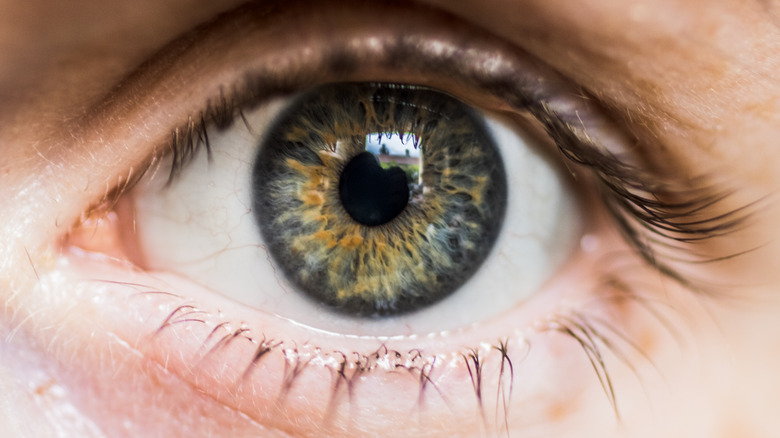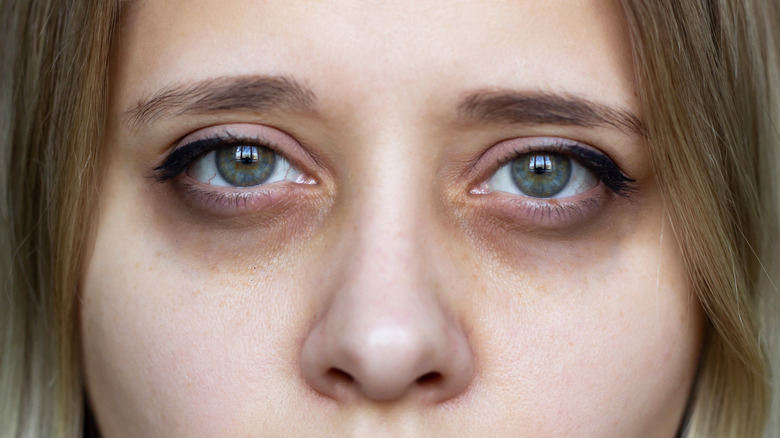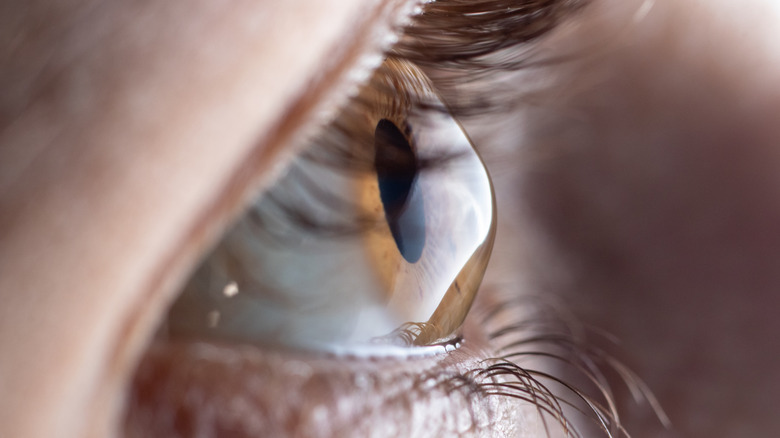Your Eyeballs Do The Most Disturbing Thing After You Die
Novelist Rick Yancey once said, "If you look death in the eye and death blinks first, nothing seems impossible" (per The Guardian). But what if you blink first? In the existential staring contest between life and death, one can only ward off the harrowing glare of the reaper for so long. One day, you will blink before he does, and on that day, your eyes will close forever. However, before they do, they will have accomplished some extraordinary feats of information delivery. According to an article posted at MIT, our brains are capable of processing an image that the eye sees for as little as 13 milliseconds. According to Mary Potter, an MIT professor of brain and cognitive sciences, "what vision does is find concepts. That's what the brain is doing all day long — trying to understand what we're looking at."
Those are things we know for certain about the functioning eye, but what about the non-functioning eye? What happens when this supremely complex organic mechanism of nature starts to shut down after its host dies? Corneas are viable for transplant for up to 14 days after someone dies, though most transplants take place within a week, per the Eye Bank Association of America. (Donor Alliance reports that hearts and lungs have a window of four to six hours; livers, between eight and 12 hours; kidneys, 24-36 hours.)
You always hear strange little remarks made about how someone has "dead eyes" or that they have a "lifeless gaze," but what does that even mean? Ask yourself how many pairs of dead human eyes you've actually seen. Unless you're a coroner or a crime scene investigator, odds are it's not that many.
What happens to your eyes when you die?
Regardless, some know that there's a sort of aimless, all-consuming absence that hollows out someone's optical countenance after they pass on. "Many people die with their eyes open, and when the whites of the eyes start to dry out they turn blue or gray," says forensic pathologist Dr. Judy Melinek. "This is called 'tache noir' and is frequently part of forensic board examinations" (per The Healthy). The phenomenon of the eyes graying in a postmortem state arises hours after death.
The clouding effect on the cornea starts to set in just a couple hours after the person dies. The cornea – that transparent outer layer of the eye — becomes increasingly opaque over the course of the days immediately after death, as Review of Optometry reports. After enough time, the eyeballs will eventually start to recess back into the skull once all reflexes and blood flow to them have been cut off, so that "sunken" look you recognize is quite literally a result of the eyes sinking back into their sockets (via My Health). It's kind of like when you haven't slept much and your eyes look shrouded and unnervingly dark.
The Review of Optometry also relates that potassium levels in the eyes of the deceased differ from those in the rest of the body. The breakdown and release of potassium happens in the blood, but occurs more predictably and slowly in the eyes. Analyzing that information from the eyes can help approximate an individual's time of death.
Things we can determine from a dead person's eyes
There are actually a series of things we can determine about how somebody died/the circumstances leading up to one's end by examining their eyes posthumously. For instance, by studying the level of opaqueness that has consumed a dead person's cornea, which causes that hazy, grayish discoloration), scientists can more or less estimate how long it has been since that person died. If the eyes are only slightly tinted, odds are it's only been a few hours since their passing. However, if there's hardly any translucency left, it could have been days prior that they died (per Review of Optometry).
As far as cause of death goes, the eyes provide glimpses of the truth that other parts of the deceased anatomy do not. Petechial hemorrhages are tiny little capillary ruptures that appear in both the conjunctivae and eyelids after a person has been strangled, so if a coroner observes several of these, there's a chance that the individual was murdered via forced suffocation. "They're caused by an increase in the hydrostatic pressure in the capillaries," says Dr. Randy Hanzlick. "You can see them in many forms of asphyxia, like strangulation or chest compression, but you can also see them if there's a [build-up of] pressure from heart failure or a sudden cardiac death" (via Review of Optometry).


